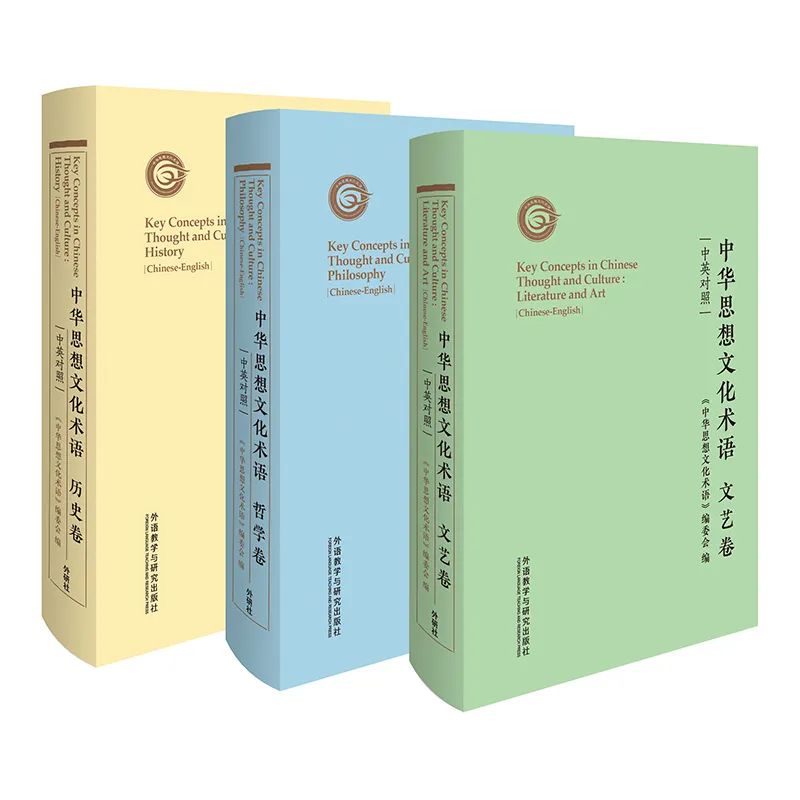不论是国家的治理与发展,还是个人的修行与锤炼,中华优秀文化中都有许多值得汲取的智慧。
一起来学习古人和而不同、求同存异的思想,同时把握时代特征、时代趋势,为我所用。
中英文内容来自中华思想文化术语传播工程核心成果——《中华思想文化术语》丛书。
中和
Balanced Harmony
人心所达到的中正、和谐的状态。人的喜、怒、哀、乐等情感的活动及其在言行上的表现符合礼的要求,不失偏颇进而达到一种和谐的状态,即是“中和”。
Balanced harmony is an ideal state of human mind. When people’s emotions such as joy, anger, sorrow, and happiness are expressed in an unbiased way in keeping with the rites, a state of mind featuring balanced harmony is achieved.
▌引例
喜怒哀乐之未发,谓之中;发而皆中(zhòng)节,谓之和。中也者,天下之大本也;和也者,天下之达道也。致中和,天地位焉,万物育焉。(《礼记·中庸》)
When joy, anger, sorrow, and happiness are not yet expressed as a response to other things, they are in a state of balance. When they are expressed in words and deeds in accordance with the rites, harmony is achieved. Balance is the foundation under heaven, while harmony is the universal rule under heaven. If a ruler can achieve balanced harmony, both heaven and earth will be in their proper places, and all things will prosper and thrive.
求同存异
Seek Common Ground While Setting Aside Differences
寻求共同点,保留不同点。战国时期的学者惠施(前370?—前310?)、庄子(前369?—前286)等人认为,一切事物的差别﹑对立都是相对的,差异性中包含着同一性。
The term means to seek points of agreement while maintaining difference of opinion. Scholars of the Warring States Period such as Hui Shi (370?-310? BC) and Zhuangzi (369?-286BC) believed that differences and antitheses between all things are relative, and that commonalities exist within differences.
▌引例
大同而与小同异,此之谓“小同异”;万物毕同毕异,此之谓‘大同异’。(《庄子·天下》)
When there are major commonalities and minor differences, or minor commonalities and major differences, it is called “minor commonality and differentiation.” When things are totally identical or totally different, it is called “major commonality and differentiation.”
和而不同
Harmony but Not Uniformity
在尊重事物差异性和多样性的基础上实现整体的和谐共存。“同”指对事物差异性的抹杀,“和”则意味着对事物差异性的保存与尊重。不同的事物彼此间相互辅助、补充,才能组成一个充满生机、富于创造性的和谐整体。
The term means achieving overall harmonious co-existence on the basis of respecting differences and diversity. Uniformity and harmony are two different attitudes to treating and accommodating social groups. Uniformity means obliterating differences in everything while harmony is to keep and respect the differences. Allowing different things to complement and supplement each other will create a harmonious whole full of vitality and creativity.
▌引例
夫和实生物,同则不继。(《国语·郑语》)
Harmony begets new things; while uniformity does not lead to continuation.
居安思危
Be on Alert Against Potential Danger When Living in Peace
处在安宁的环境中,要想到可能出现的危难。历代有抱负的统治者都希望国家长治久安,常常提醒自己不要沉湎于安逸享乐,而要勤于政事,励精图治,及时化解社会矛盾,防患于未然。
One should always be on alert against potential danger in time of peace. All ambitious rulers in history hoped to maintain enduring stability. They often reminded themselves not to indulge in pleasure and comfort, but to conduct diligent governance, work hard to make their country prosperous, and resolve social conflicts in a timely manner so as to prevent them from developing into crises.
▌引例
若能思其所以危则安矣,思其所以乱则治矣,思其所以亡则存矣。(吴兢《贞观政要·刑法》)
If one keeps thinking about danger that could emerge, then there can be safety; if one keeps reminding oneself of the possible outbreak of war, then there can be peace; if one keeps thinking about the possible fall of the nation, then the nation can be preserved.
革故鼎新
Do Away with the Old and Set Up the New
革除旧事物、创建新事物。“革”与“鼎”是《周易》中的两卦。
Do away with the old and set up the new. Ge (革) and ding (鼎) are two trigrams in The Book of Changes.
在《易传》的解释中,革卦下卦象征火,上卦象征泽。火与泽因对立冲突不能维持原有的平衡状态,必然发生变化。因此革卦意指变革某种不合的旧状态。鼎卦下卦象征木,上卦象征火。以木柴投入火中,是以鼎烹饪制作新的食物。因此鼎卦象征创造新事物。
▌引例
革,去故也;鼎,取新也。(《周易·杂卦》)
Ge trigram signifies doing away with the old; ding trigram symbolizes setting up the new.
中华思想文化术语

《中华思想文化术语(历史 哲学 文艺)》是国务院批准设立的“中华思想文化术语传播工程”的成果之一,以学生和教师等群体为读者对象,为其研读、理解和翻译中华思想文化相关内容提供准确权威、正本清源的参考。
这些术语反映了中国传统文化特征和民族思维方式,体现了中国核心价值,编写者用易于口头表达、交流的简练语言客观准确地予以诠释,目的是在政府机构、社会组织、传播媒体等对外交往活动中,传播好中国声音,讲好中国故事,让世界更多了解中国国情、历史和文化。
限 时 特 惠: 本站每日持续更新海量各大内部创业教程,一年会员只需98元,全站资源免费下载 点击查看详情
站 长 微 信: lzxmw777






